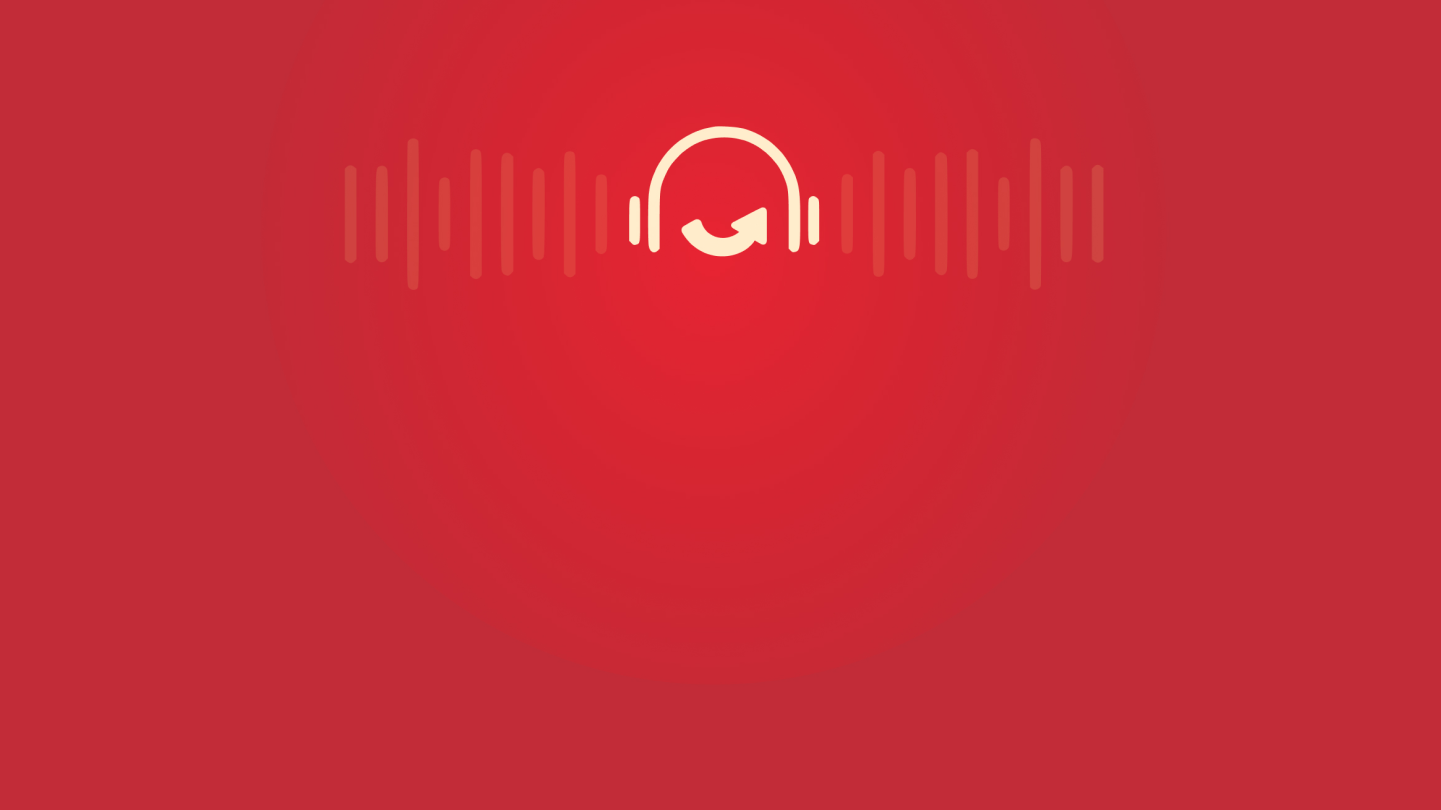Your thoughts, ideas and aspirations have value, irrespective of your role
Fail Faster
Episode 428
-25 minutes
Join us as we chat with Andrew Moore, VP of Software Engineering at Nations Lending.
In this engaging conversation, we explore Andrew’s diverse background in the tech industry, from networking and IT support to data engineering and software development. He shares how he overcame misconceptions about software engineering and found joy in solving problems and helping people. Andrew shares the importance of understanding the root causes of problems before crafting technical solutions. He also emphasizes the need for pragmatic technology applications, especially in today’s rapidly evolving tech landscape.
Podcast transcript
Vandana: Hey, Andrew, welcome to the Fail Faster podcast. How are you today?
Andrew: Doing well, doing well. Thanks for having me.
Vandana: Absolutely. Super excited to have you. Could we introduce you to our listeners, Andrew, if you can touch upon, you know, some amazing things from your background, where you were born, maybe anything that you would like to add, which influenced where you are today would be amazing.
Andrew: Sure thing. So I’m Andrew Moore, I’m currently serving as VP of software engineering at Nations Lending, which is a nationwide United States mortgage lender. And I’ve been with this company for about two years. And my background is really across all forms of technology. So I’ve done everything from networking and cable infrastructure to, you know, IT support, software engineering, data engineering, you name it, I’ve probably done it at least for for a few months anyway.
Really, how I got into technology is that, you know, it’s become a pervasive part of our lives. And I’ve always been a problem solver, I’ve always enjoyed helping to bring solutions that leverage my expertise. And the more that I got into technology, the more I realized that there’s a there’s a people component to it. You know, I did a lot of work as an IT consultant. So lots of traveling around and talking to different people and really meeting them where they have problems.
You know, nobody really calls an IT consultant when everything’s going great. So what I what I realized was, I liked the aspect of bringing solutions to people. And I had in my head through college that I’d never be a software engineer, because I didn’t like the idea of sitting at a desk and not talking to people. And what I learned very quickly after his first job I had out of college was a software engineering role. And I realized that the history or the the perception of software engineering is largely incorrect. There are certainly certain opportunities, certain roles where you sit at a desk and don’t talk to people.
But where I really was able to find enjoyment in software engineering was adding another tool to my tool belt, being able to take code and present it as a solution, but also being able to look at problems and look at process and look at the entire ecosystem that people were working within. And having that one extra tool to help people understand what it is they’re doing, help people be more effective.
Vandana: Absolutely. What a great way to put it. I love that, you know, people, and that is the impact, right? It’s just so many folds more than, than maybe any other role.
Andrew: Yeah, it’s, I say, I quote the Jurassic Park line a lot. We spend a lot of time wondering if we could, that we didn’t stop to think if we should. So every time someone asked me, well, hey, can you do x, y, z? My answer is generally, yeah. But let’s, let’s talk about why you want this. Maybe there’s a better solution out there. Maybe there’s a solution where I don’t even have to write a line of code. Those are often the most effective, because it’s, it’s being more pragmatic about how we apply technology.
Vandana: Absolutely. That brings us to maybe getting into some of the outcomes that you were a part of in this role or previous roles, and were able to create something amazing with technology and your skill.
Andrew: Sure. And, you know, from my background, from a industry perspective, I’ve done a lot of work in financial services and mortgage lending. But I’ve also worked in healthcare, I’ve worked in government contracting, I’ve done a little bit of everything. So I’ll try not to be too dry on the the mortgage lending details. But, you know, in the past, I’ve I’ve gotten a lot of excellent mentorship and excellent guidance around how to grow my technical skills and how to, to really be successful.
And a lot of where I see software engineers or technology leaders fail, and I’ve certainly fallen into the same trap before, is you want to bring the technical solution to the front to the forefront. When someone says I have a problem, you say, Okay, I believe you, I understand your problem. Now let me go build something to beat to make this work. And I realized I started with with the failure side of things, but I’ve, I’ve gone into situations where I’ve just completely taken the presented problem at face value and said, Okay, well, that all makes sense. Because it makes sense, then I don’t feel the need to dig deeper, don’t feel the need to ask more questions and fully understand and fully understand that you understand the problem.
So as a result, I’ve built things or gone very far down the path of building things that ultimately don’t fully solve the problem. Because we as a as a business, both technical, technical and non technical didn’t dig deep enough to understand the root cause of the problem. And on the other side of that, on the success side, when I asked those questions, when I take time to not only understand for myself, but also help the my business partner help my stakeholder understand as well. What are our capabilities? What are our root causes? What led us to this point where we have this problem? That’s where I’ve been able to build things that that ultimately stand the test of time, those are the products that, you know, 10, 12, 13 years on, I’m still getting questions of, hey, this thing’s still out there in production, but nobody that works here now knows about it. But you really got it built it, you know, 10 years ago, those are the things that ultimately ultimately have that staying power from a product perspective. Love that sustainability, right? That’s where that comes from being able to build something that sustains the test of time.
Vandana: Any examples that Andrew that you would like to quote here of what some of the successful stuff that you built?
Andrew: So yeah, I think, I think one of my one of my favorite examples is largely the result of the the company I was working for at the time being so far out ahead of the competition when it came to innovation and leveraging the the product offerings that were out there in the world. And it was I was at a previous mortgage company. And we were trying to solve the problem of how do we present mortgage documents to not only internal colleagues, but also borrowers.
And the product offerings that were out there in the market were either two, they were too too far expensive with not enough feature. Or they they just didn’t have the the capabilities that we were looking for. They didn’t give us the flexibility to do our business the way we wanted to. And so ultimately, we decided to, to build we built our own image viewer that took care of allowing borrowers to upload documents allowed borrowers to e sign and allowed our internal staff to do all of their document manipulation and management process delivering to investors. And the thing that the reason that I think that this product is really important in my career and my learning process is all of these features are pervasive in the digital mortgage world today. That’s 10,12 years on, right?
So things that we built, while they ultimately didn’t become a commercial product themselves, were really the forebears, the front runners to what’s considered table stakes in the mortgage industry today.
Vandana: Love that. Yes, yes, absolutely. Well, congratulations on being part of the first crew who started this.
Andrew: Yeah, it’s one of those you look back on it. And if, if we had thought about things differently at the time, maybe it would have been a commercial product. And this would be a different conversation. But at the same time, it did set set us apart as a lender from a lot of other lenders, because we had capabilities that nobody else did.
Vandana: Love that. Let’s talk about leveraging technology and data sets in, in times that are slow. So I know that lending industry goes through ups and downs. So what have you done in that space?
Andrew: Yeah, I think, I think we’re all feeling the economic headwinds, so to speak, regardless of what industry you’re in. And, you know, from a technologist perspective, we see these new capabilities out there, we see new large language models coming out GPT four, we see AI becoming more pervasive and more prolific. And I think there’s something inside of us that says, I’ve got to go do that. I’ve got to go leverage whatever the new shiny squirrel is, I gotta, I’ve got to bring that out and build something with it.
There’s nothing wrong with that. But when you pair that desire to build, and that desire to leverage new modern technology with these economic headwinds, I think a lot of technologists are feeling kind of the frustration. And there’s, there’s a component of that too, with, you know, the layoffs that have been front page on just about every, every news article that that put us into a tough time from a business perspective.
You know, we’re trying to maintain morale, we’re trying to maintain high degree of quality and delivery, while also balancing that with reality. And so when it comes to leveraging tech, it goes back to what I said earlier, you have to think really long and hard about how technology best impacts your business. It’s what we’re what we’re doing at nation of lending is how do we leverage things that we either already have data sets that we have access to that we can generate to to differentiate ourselves in the market.
And often, to borrow the Steve Jobs approach, you’ve got to say no to 10 times more things than you say yes to. Because we have to stay lean, we have to stay efficient. But at the end of the day, we still want to, to move the needle to make progress, right. So when it comes to leveraging tech and data, from a organizational leadership perspective, the the best key, the only key really, in my opinion, is only work on the things that only you can work on things that make you as a business unique, do those things, move the needle. And then, you know, as the as the economy turns and things start looking nicer, then you start leveraging those things to build additional revenue to build more capacity.
And then with that expanded capacity, you put more bodies, more people, more resources towards solving some of those other things you may have said no to in the past. Now they become more practical. Now they become more valuable, since you can actually dedicate time to it.
Vandana: That’s a great way and a great approach. Thank you for sharing that mindset. Yes. What are some of the challenges, Andrew, that you’re facing that are present for you in the moment today?
Andrew: I think there, you know, there’s challenges, and then there are challenges. There’s the things that I bump up against on a daily basis that, you know, we in the business, buzzword bingo, we call opportunities, but passing over skipping over and have the budgetary constraints or economic issues, or all of that, those things are solvable. They’re solvable by, like I just said, just making sure that we’re tight on priority and triage. The interesting problems to solve, I think, are largely related to culture and community as we in equal measure become a more global society, I can talk to people in India, I can talk to people in Ukraine in all these places around the world, without leaving my house.
But that creates an interesting problem, because I haven’t left my house, I haven’t engaged with people I’ve, I’ve been talking on the phone, there, we have nice things like, like webcams, and we can make video calls. And, you know, that helps. But ultimately, it puts us at risk of being isolated and isolating ourselves so that when we do enter, you know, public situations, there’s that anxiety that creeps in. So the thing that I’m trying to solve now is we beyond all of the technology, how do I build or how do we build really effective communities, whether they are on our city block, or in our county, our state, our country, or across the world, these communities that we build, whether they be related to our business or jobs, or, you know, just happenstance meetings, they can be really valuable to providing quality of life and really giving us skills and capabilities to introduce back into our business.
But we have to be intentional about it. And I have to make that the direction and the goal rather than the symptom or the side effect. And have you been involved in any steps taken to create these engaged communities? I have. And so there’s a big push lately for content creation in LinkedIn. As you well know, of course, you’re in the podcast game. So about six months ago, a colleague and myself, we created our own podcast, and I can share the links with you if you want to put them in the show notes. But we talk about organizational leadership and culture and community and challenges around operating highly effective teams while actually enjoying doing it.
That’s the thing you can you can work really hard and you can build a lot of great stuff. But sometimes you burn the candle at both ends and you burn out and you’re you make this this meat grinder for for people and you have this attrition problem and nobody really enjoys working in the team. Even though you’re building cool stuff. What we’re trying to do is explore the idea of how to make that process of building great things and building high performing teams that actually enjoy coming to work that actually enjoy the process. And there’s a lot of folks out there.
Like I said, there’s a big push in content creation. And there are a lot of folks that do it better than I do. And there are a lot of folks that are there getting into it. And so the goal that I have for this phase of my career in this phase of my life is not only building my own stuff, but also empowering others to do the same. So that I can communicate that if you have ideas, if you’re sitting there at home, and you have thoughts, hopes, dreams, those have value. I want people to understand that no matter if you’re a junior developer, if you’re a senior vice president of capital markets, your ideas have value, and someone out there can benefit from hearing what you have to say.
Vandana: I love that. That is so great. And I think that is, yes, one thing common between, between both of us. I was going to ask you more about the podcast, and you already touched upon that. But would you like to share any insights that are being very present for you, as you are creating this content and engaging with your customers that was not even, you know, anything that, I mean, that was something that was new?
Andrew: Yeah, it’s, it’s all new. It is a completely new experience for me. And as a person who grew up in technology and engineering, I’ve had to break through a lot of, call it personal predilections. I’m a very introverted person by nature. So speaking to a camera or speaking to anyone in public was something that I had to get comfortable with. Yeah. But the biggest advice or feedback that I can give is that it gets easier very quickly, like anything, the more you do it, the more comfortable you become talking to a camera, that I put a funny post out on LinkedIn a few weeks ago, I was, I moved my webcam over to the side. And I was having a hard time making eye contact with the webcam. It was just, you’re sitting here in front of me, which I’m not making eye contact with. But so I put a pair of googly eyes on my webcam. Now I can make eye contact with the webcam. Yeah. But sitting at home by myself, or, you know, sitting at home doing content like this, it gets easier, the more you do it. And the feedback is, you know, just just try it. If you don’t like it, you don’t have to keep doing it. But you can say you’ve tried it.
And if you do happen to provide that valuable insight that somebody else was looking for that, that point of empathy or commiseration, you know, that has already paid for the effort that you put into making it, in my opinion, anyway.
Vandana: Absolutely. And has that increased the engagement? Like, has that given you your company as any business outcomes?
Andrew: So from a business perspective, I don’t, I don’t think there’s been a ton of needle moving there. You know, our business being in mortgage lending is largely focused on originators and sales and loan products, which is not really the content that I produce. I can say, though, that as an individual, say my own private brand, my personal brand, I’ve definitely seen an uptick in engagement and folks reaching out to me, you know, you found me as well, you know, obviously, so there is some there is some lift there.
The biggest thing I’ve, you mentioned engagement, you know, there’s, there’s a lot of different metrics. And I don’t think this is the time or the place for me to go into detail on that. But the level of engagement that I’ve started receiving from my content is a lot bigger than it was this time last year, simply because of the consistency and, and also me reaching out more and trying to to build more relationships proactively rather than only waiting to meet people in person.
Vandana: I love that. And, again, great idea and good that you displayed the courage because I know I was at the same cross section at one time, I was like, what am I doing? But yeah, we are now starting to get more into videos. And I look forward to getting some guidelines from you.
Andrew: Absolutely. Anytime. There’s a lot to producing a podcast. So anybody that starts, you know, you’ve already solved 80% of the challenge. And that deserves to be that deserves accolades, it deserves the respect that comes behind it. It’s not easy to get started. Once you start on it, then, you know, as long as you’re continually engaged in making things better, then I think that’s what, what really makes us successful long term is the staying power. And, you know, with with this podcast, you’ve got hundreds of episodes. So it’s, there’s content out there, and you’re continuing to push through it. So yeah, that’s, again, the hardest part.
Vandana: Thank you so much. And is there anything that I haven’t asked you, Andrew, that is on mind for you?
Andrew: So I think the, the biggest thing, the biggest place my, my head is at, you know, I’ve covered a lot of how I look at technology in the business world, that’s focusing on pragmatic application of technology. But in typical Moore’s Law fashion, things are coming quicker and quicker and quicker. We’re getting more more technical capability at a rate that’s, that’s hard to wrap your mind around. And the biggest thing that I’m working through right now is understanding how to employ some degree of governance around technology going forward that balances that pragmatism with the the innovation and the capabilities that we can bring to bear in in a way that I don’t think most businesses are prepared to deal with.
Most of us do yearly budget cycles. But now we’re seeing new technology develop within a quarter. And that’s where, at some point, we’re not going to be able to be that forward thinking or forward looking to be able to say that in Q3 of next year, this new capability is going to be prepared, you’re going to be available. So I’m thinking through how to, to build that that flexible governance in such a way that we can as technologists still bring new capabilities to market without necessarily hamstringing our business and our accounting and our finances.
Vandana: And who else to be part of that initiative than you? You’ve worked in most, you know, governance in healthcare is highly governed, and also the government, as you said, so good luck, good luck with that. And I wanted to ask you any anything else, golden nuggets that you want to share before we wrap up the episode?
Andrew: I don’t, I don’t think so. You know, I think if anybody out there is listening, that’s interested in hearing more about anything that I’ve talked about, feel, please feel free to reach out. I could talk about a lot of this stuff for hours. So it’s, it’s the biggest challenge of doing any of these podcast spots is how do we distill this down into something that’s entertaining and also easily consumable in a half an hour?
Vandana: Absolutely. Thank you so much. Would you like to tell us what is your podcast called?
Andrew: So my podcast is called Plays Well with Others. And we are on YouTube, and we’re on everywhere you get your podcasts, Spotify, Apple Podcasts, Pocket Casts, etc, etc, etc. So if you if you do find us from this podcast, drop us a line in the comments or find me on LinkedIn or any of the social medias and let me know.
Vandana: Absolutely. Thank you so much, Andrew, for coming on the show. We have had such a fun listening to you.
Andrew: Yes, thank you. Take care.








